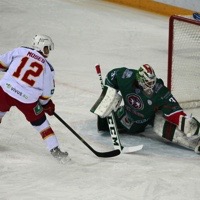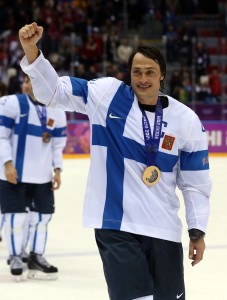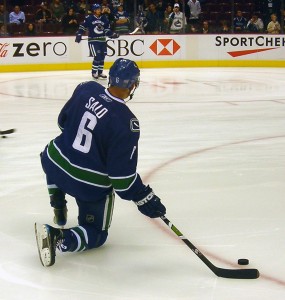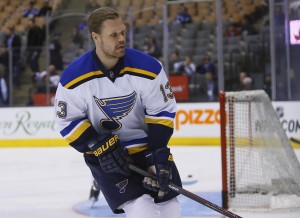Finland is a country which, for most hockey fans, doesn’t need an introduction: many Finnish players are playing in the NHL since many years, and the national team ranks among the best in the world. In the following article, I will try to sketch the main features of hockey in Finland, but also the state of its main league and of its national team.

The Jokers’ Joke
In the ever-expanding KHL, one of the most recent acquisitions were Jokerit (“the Jokers”), a team from Helsinki which also competed in the last Spengler Cup. Their first season in Russia’s top league (more exactly in the Bobrov Division) was highly successful, as they managed to reach the semi-finals of the Western Conference after being knocked out by CSKA Moscow in Game 5. Before that, they won the Finnish national title five times, more recently in 2002, and they still have a roster mainly made up of native players. It is even more interesting to recall how both Teemu Selänne and Jari Kurri started their playing career here, being the only Finns to have surpassed the 1000-points barrier in the NHL.

A solid league
In the very weird-sounding (being myself a student of Finnish because of hockey -sorry: Jääkiekko-, I guess I would be entitled to make such a remark) Finnish language, the main national league is called Liiga, that is, “League”, as they are also called many other sport leagues in the country. Founded in 1975 as successor of the previously amateur, playoff-less championship, it is probably one of the finest European leagues around (and the first professional sport league in Finland at the time), with fourteen teams and currently no promotion and relegation in place. Besides the final, a bronze medal series is also contested between the two losing semifinalists. With the final games of the final approaching, the race for the cup is still ongoing between Kärpät (from Oulu, in the north) and Tappara (from Turku), battling exactly as they did one year ago (with Kärpät ultimately succeeding in winning the competition).

The Flying Finns?
As mentioned before, the Finnish national hockey team probably requires no presentation: considered part of the Big Six, it has won two World Championships (in 1995 and 2011), two silver and four bronze medals (the last time being in Sochi, where they defeated the United States 5-0) at the Olympics, and it never fell beyond seventh place in the latter competition. Currently ranked second in the world by the IIHF, the Lions (a nickname which derives from their national emblem) have a roster mainly made of NHL and KHL players. Besides Selänne, who was the team captain during the Sochi tournament and who is considered a sort of a national hero in his native country, it comprises among the others Sami Salo (currently a free agent), Olli Jokinen of the St. Louis Blues and Kimmo Timonen of the Chicago Blackhawks, a man with more than 1100 NHL games played during his career.

The Finnish War
Part of Group B in the upcoming World Championships, and without the Finnish Flash for the first time after many years, the Finns will face in Ostrava Slovakia, the United States, Norway, and Russia, which defeated them in the final last year in Belarus. Thus, Finland will surely start its tournament searching for revenge against its Eastern neighbor, and offering –or at least that’s what I hope- very heated contests, a really common feature in the Finns’ style of play.
Using the experience earned in the NHL and in the KHL (with only one or two national players still in the Liiga), they have surely grown in an astonishing way, but the risk the Finnish hockey landscape is facing remains: the flee of young talents from the country, being them contacted by North American and Russian teams almost on a weekly basis; a fact that, if not put under control, will probably endanger the quality of the Liiga in the future, giving it the status of little more than a “development league”.
But, for now, sit back and enjoy the Lions’ show in the Czech lands.